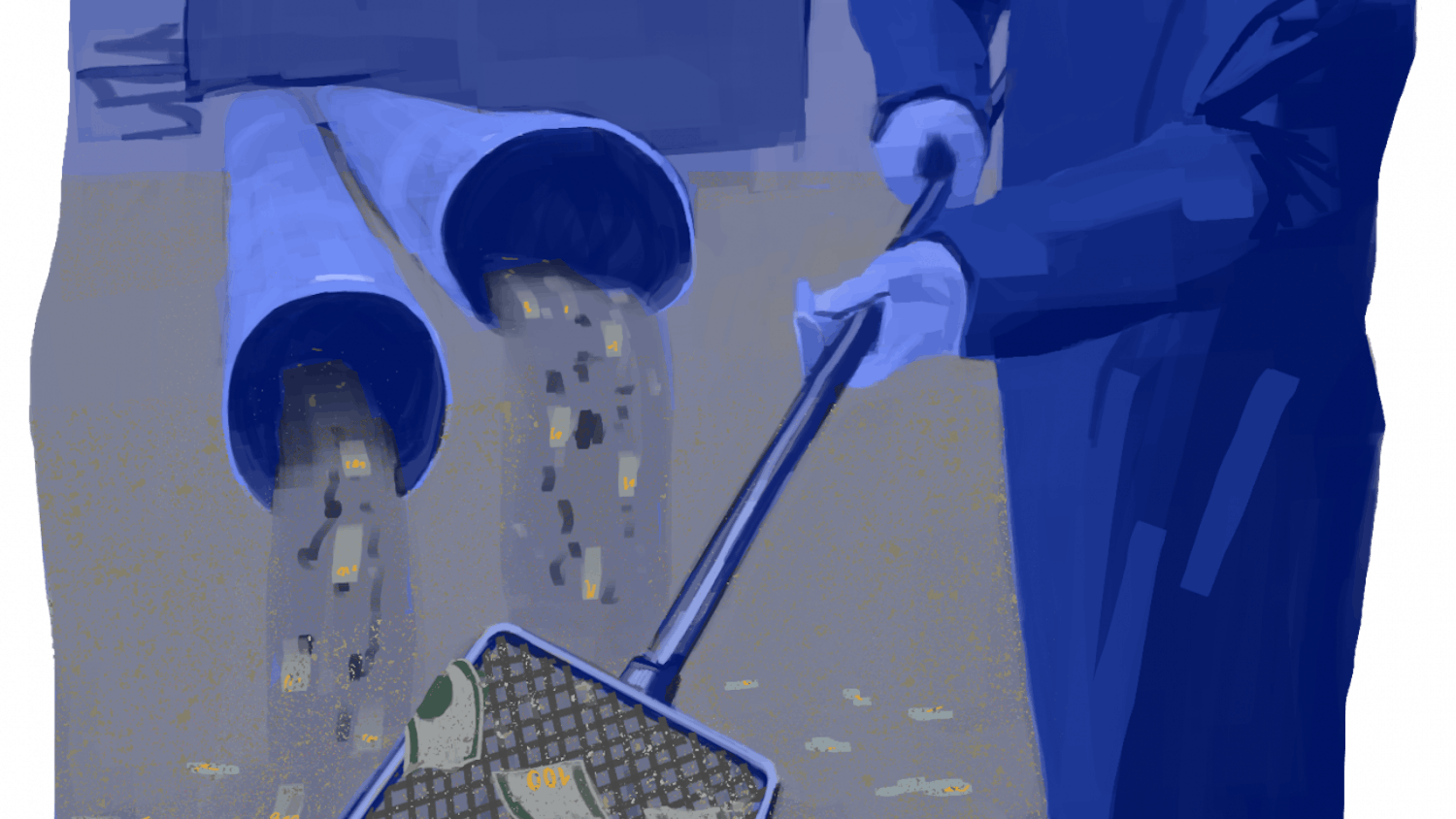Is Brown really green?
Most Brown students are familiar with the phrase "Brown is Green," which is often used to describe the University's efforts to make Brown more environmentally conscious. The initiative has encompassed everything from reducing consumption of bottled water to making campus buildings more energy-efficient.
Though this trend toward "greening" the University seems nearly ubiquitous today, it was not fully official as a policy by the University until 2007. That year, Facilities Management recognized the "Brown is Green" slogan through a website detailing the University's campus-wide environmental initiatives.
"We decided to start a Brown-sponsored ‘Brown is Green' site to take all the great work that everyone around campus was doing and have a repository for people to share information," said Chris Powell, director of sustainable energy and environmental initiatives.
"It was a way to go to one place and connect with many different organizations," he added.
An energy and environment advisory committee began developing an environmental mission statement in 2006 that came to fruition in 2007, Powell said.
The committee's work led President Ruth Simmons to sign the Sustainable Campus Charter in January 2008, which connected Brown to the International Sustainable Campus Network. The charter entailed a commitment on the University's part to make the campus more sustainable.
That same week, Simmons announced the University's goal to reduce its emissions 42 percent below 2007 levels by 2020. This goal would be reached in large part by finding alternative ways to fuel buildings and by increasing efficiency.
Current progress
Facilities Management has begun releasing an annual report detailing what progress Brown has made toward sustainability. As The Herald reported Sept. 9, the University has already cut its emissions to 21 percent below 2007 levels, which is half of what the University hopes to achieve by 2020. Powell credited this quick progress to the ease of switching to more efficient fuel sources.
Another sign of progress cited in the 2010 report is the requirement that all new buildings meet LEED silver standards, a rating for building sustainability.
In some instances, the University has even surpassed the silver standard. The Stephen Robert '62 Campus Center and the new Perry and Marty Granoff Center for the Creative Arts are both on their way to becoming gold certified, second to the highest attainable rating of platinum, according to the report.
Besides pursuing emissions reductions in buildings, the University has collaborated with student groups to make the campus green in other ways. One example of this is the Beyond the Bottle campaign, which involved Brown Dining Services partnering with students to encourage the use of reusable water bottles. According to Powell, these kinds of projects have been part of a larger effort to make the campus more sustainable.
Powell and Ginger Gritzo, energy and environmental programs coordinator, said the University, along with emPOWER and Eco Reps, is currently assessing the number of water sources available on campus to make sure students have options aside from disposable plastic bottles.
"If we need more sources of water, we will work with dining to go forward and bolster those hydration sources," Powell said.
The earth's recycling
Composting is one environmental initiative that has proven challenging for the University. Lilly Mirviss '12, an organizer for Student Composting to Rejuvenate Agriculture in Providence, said that progress is being made to allow students who cook to compost their food waste. She said that implementing a plan for the entire student body remains difficult given the lack of composting solutions in Providence.
"We're working on short-term solutions now," Mirviss said. "There is a compost bin at the (Urban Environmental Lab), at West House and at the student garden on Hope Street, and we're trying to get grant money to build more bins and create a more unified composting system for students."
Mirviss acknowledged that some universities are now handling waste and composting on site. But she said a better solution at the city level will allow Brown to expand its composting program.
Middlebury College, which is known for its sustainability efforts, has made composting a priority.
Clare Crosby, the communication and outreach coordinator at the sustainable integration office at Middlebury, said on-site waste and compost management has proven beneficial.
"It is more cost-effective to have our own facility, and there are fewer hoops to jump through," Crosby said. "You don't need to transport it and find someone to deal with it. We also get the advantage of being able to use the compost."
Though Facilities and student activists have expressed a need for a more robust composting system and even more efficiency in buildings, The College Sustainability Report Card recently gave Brown an "A" rating, The Herald reported Nov. 10.
Though many other universities received similar marks in many of the scoring areas, Brown did comparably well in the endowment transparency category. The report notes that Brown makes its asset allocations available to the public and that the University prioritizes investment in sustainable projects.
How does Brown compare?
Brown's sustainability rating may rank among the highest in the nation, but there are some other colleges with standout initiatives that set them apart from the rest.
Carleton College in Northfield, Minn., for example, accounts for 40 percent of its energy with a wind turbine near the school. It has also set a specific goal to be carbon neutral by 2050.
Carleton has also made great strides in composting.
"All of the food in the dining halls is composted and almost all of the dining halls' products are compostable," said Nina Whitney, a student sustainability assistant with facilities at Carleton. She added that they are also working on putting compost bins in residential bathrooms.
Whitney and Ryan Noe are part of a five-person group of students who are employed by facilities at Carleton to work on sustainability initiatives.
Brown has recently taken similar steps. Sustainability intern Ben Howard '11 is one of several students working with Facilities Management on campus sustainability projects. Facilities expressed its desire to expand the number of students with whom they work directly depending upon available funding.
Middlebury has also set out some ambitious goals, including a plan to become carbon neutral by 2016. In order to reach this goal, the school's administration and students put together a plan that included constructing a biomass gasification plant to power part of the school.
In addition to reducing emissions through their woodchip-powered biomass plant, which Middlebury claims will have the secondary effect of putting money into the local forestry industry, the college also plans on purchasing offsets to meet its goal of carbon neutrality.
According to Powell, Brown has chosen not to purchase any carbon offsets and will meet all of its goals through actions taken specifically by the University.
Middlebury is also moving to make its athletic programs more green, encouraging athletes to drink from reusable water bottles and transporting players to games using biodiesel vehicles.
Positive direction
While some universities have taken unusually bold steps to be more energy-efficient, such as building on-site waste and energy facilities, the more traditional steps Brown has taken have proved to be relatively effective.
The University has begun to ramp up its efforts to work with students, and Facilities has plans to install low-flow shower heads in residence halls. Brown is collaborating with students from emPOWER and Ec
o Reps on this project.
Powell claims that one of the most significant signs of progress has been the increased communication between students and faculty in making the campus more sustainable.
"We've done a much better job reaching out to other departments, but the biggest change was bringing in all the student groups," Powell said. "You realize how powerful and unique the University is when you see the number of groups involved."
Powell was also quick to point out that on top of all the efficiency progress outlined in the most recent sustainability report, there are many projects either completed or underway that did not receive mention.
"There is a lot of efficiency work that we did this summer and that are in the works that weren't featured," Powell said. "It took a lot of work to accomplish this much and to have this many projects underway."
In addition to the major emissions reductions in new and existing buildings, there is a laundry list of other changes being made across campus to make Brown more green.
Dining Services is sending its pre-consumer food waste to pig farms, and according to Mirviss, it is also trying to send food waste from students' meals to these farms, in the absence of a comprehensive composting system.
Dining Services has also begun implementing trayless dining at the Ratty, with the intention of reducing energy consumption.
Facilities Management has begun testing the use of solar trash compactors, with one already in place outside of the Ratty. Gritzo said that two more of these compactors are already on order, and that the University is looking to see where they are most needed.
"We're going to look at our campus map and come up with a plan from a labor perspective on where we should put the compactors," she said.
With this vast array of projects underway, Gritzo made it clear that the University is looking at all the areas where it can be more environmentally conscious. She said no one approach will address all of the Brown's sustainability needs.
"You shouldn't make your decision just based on one component of the environment," Gritzo said." You need a holistic approach."




